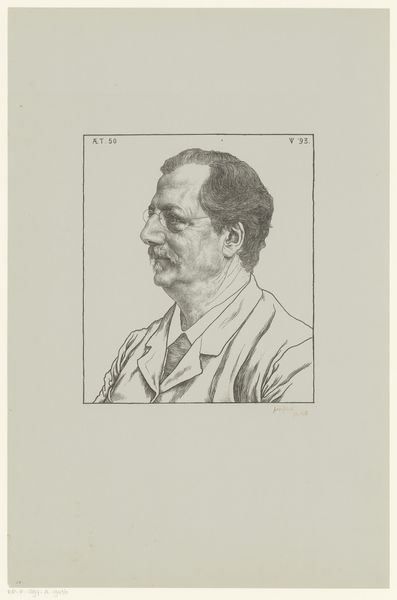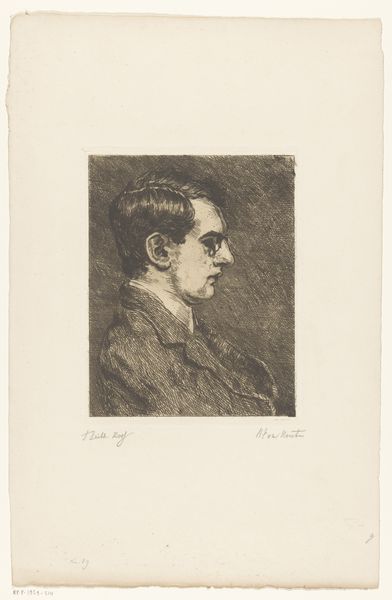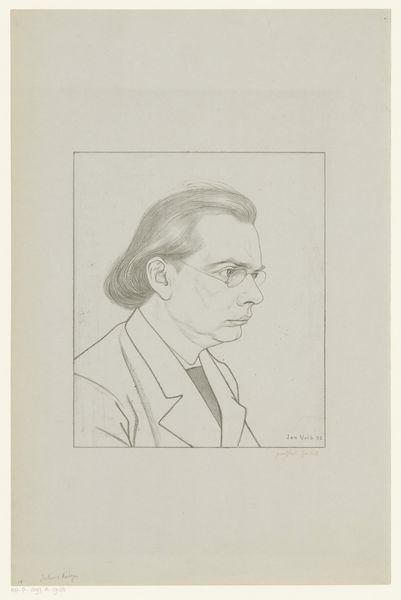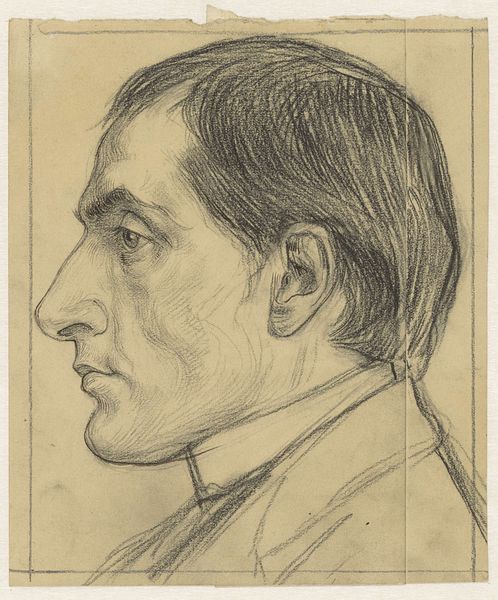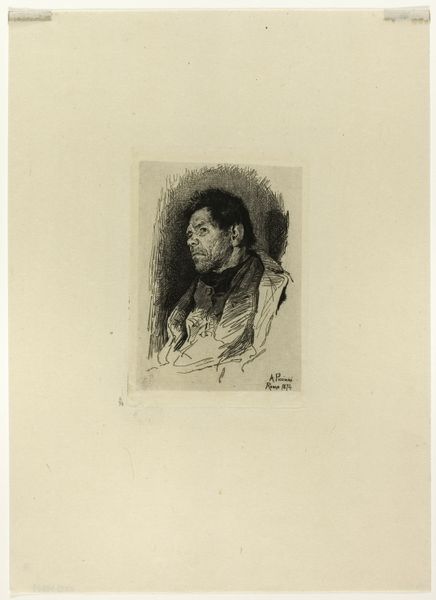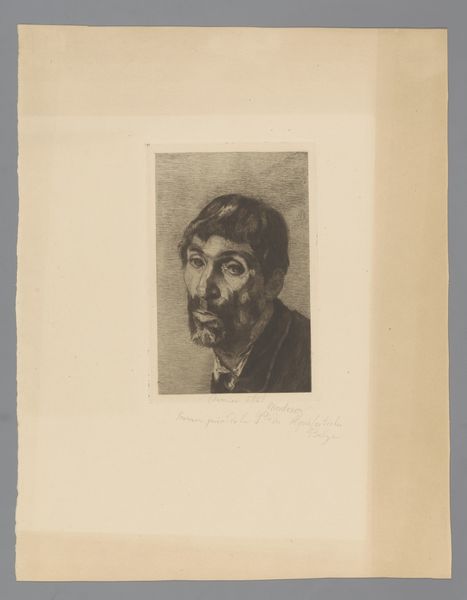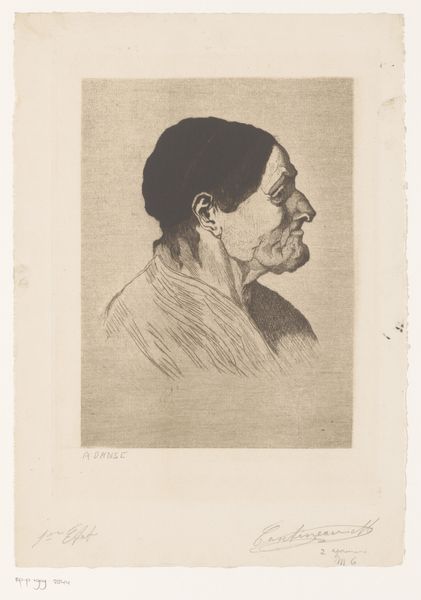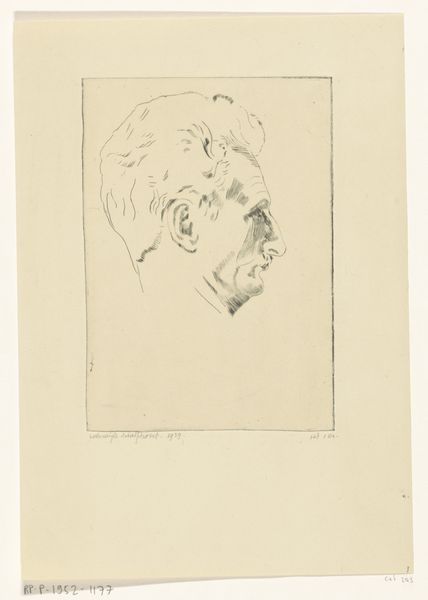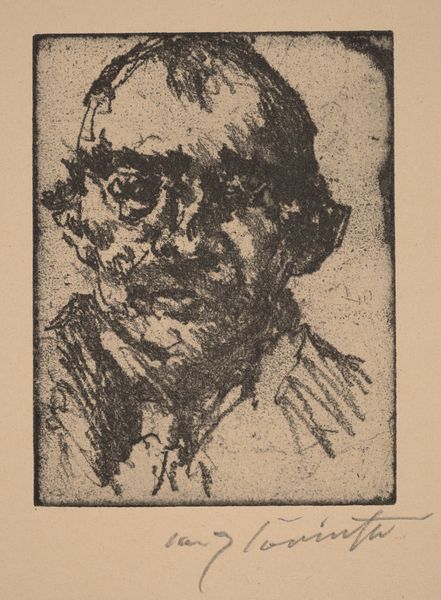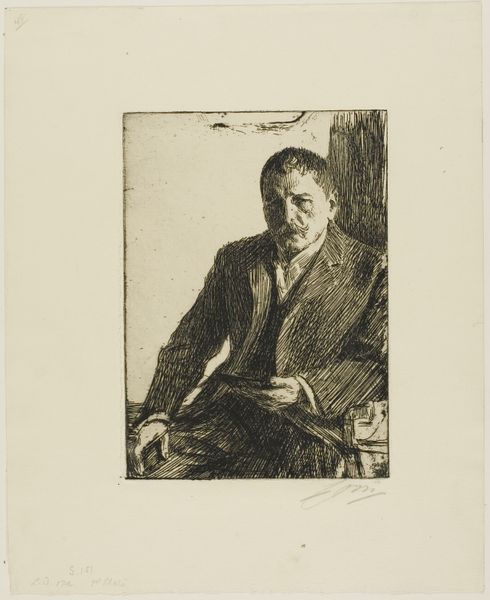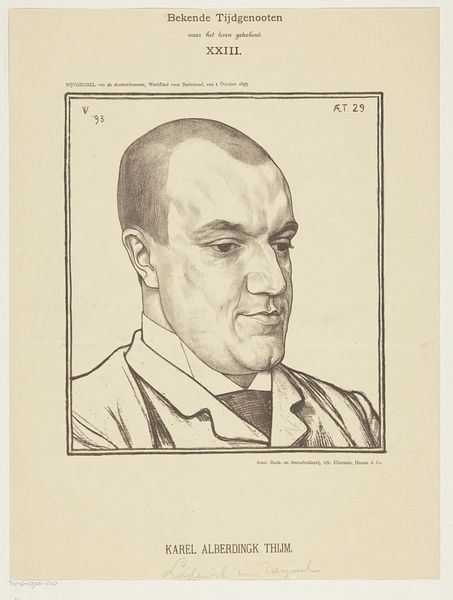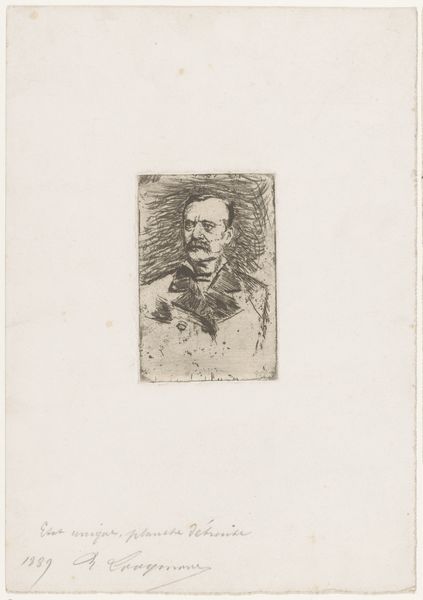
drawing, graphite, pen
#
portrait
#
drawing
#
caricature
#
old engraving style
#
caricature
#
graphite
#
sketchbook drawing
#
pen
Dimensions: height 316 mm, width 238 mm
Copyright: Rijks Museum: Open Domain
Curator: This pen and graphite drawing, tentatively dated to 1893, is entitled "Portret van Aurélien-Marie Lugné." It's currently held here at the Rijksmuseum and was created by Jan Veth. Editor: The first thing that strikes me is the stark simplicity. The use of line and the severe profile create a very direct, almost confrontational image. Curator: That intensity resonates, especially when we consider Lugné's influence as a prominent figure in the Symbolist theater movement. He was challenging the conventional norms, advocating for new forms of expression. Veth captures that very force of character in the lines of his face. Editor: And what about the labor of making? Look at the precise cross-hatching used to define form and volume, and also to build a tonal range of darks and lights to represent the sitter's persona, social standing and, more importantly, the value placed on artistic labor. Curator: Absolutely. We see here the tradition of the portrait not as just representation but also constructing identity. Think about Lugné and his rejection of naturalism—he staged plays as a vehicle to question our ideas of reality and spirituality. And how do we relate his radicalism to how Veth chooses to represent him in what seems, at first glance, to be a fairly straightforward profile? Editor: Straightforward, perhaps, but consider the caricature aspects too, how the materials have been used. The exaggerated nose, the severe brow; this drawing leans towards something more akin to the tradition of popular press graphics of the time. There’s definitely a consciousness about the commodification of images playing out here. Curator: So it seems the drawing, far from being neutral, engages directly with how an avant-garde figure might navigate his own image and its impact on the public consciousness and the artist's interpretation, wouldn’t you say? Editor: Precisely. Looking at Veth’s meticulous workmanship provides insights not only into art production at the time but also prompts inquiries regarding patronage, display value, and shifting cultural tastes and how all come together to create the man he represents. Curator: It's been thought-provoking considering the layers of identity and intention embedded within these deliberate lines, going far beyond a simple likeness. Editor: And in attending to those lines themselves, to the labor and choices inscribed in them, we move closer to appreciating the complex cultural and economic forces that made this image, and Lugné himself, visible.
Comments
No comments
Be the first to comment and join the conversation on the ultimate creative platform.

